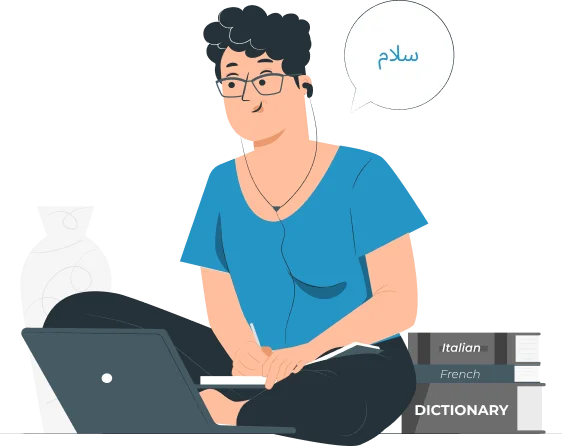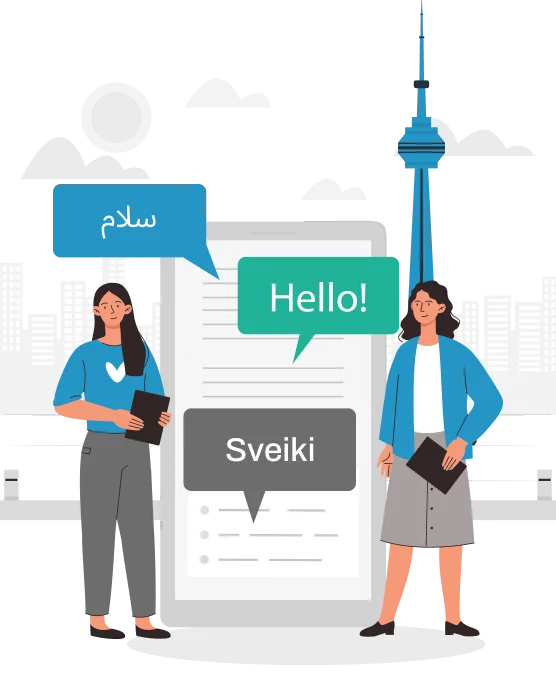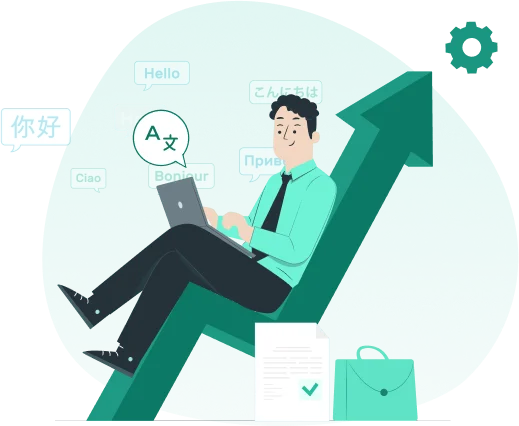
Persian Language With 130 Million Global Speakers
Persian (Farsi) is the official language of Iran and the co-official language of Afghanistan. It is the first language of over 60% of the people of Iran. Interestingly, the Farsi language is not limited to its borders, 440,000 people speak it in the United States. Persian belongs to the “Austroasiatic” language group. It is mostly spoken in Central Asia. Persian (Farsi) language is a member of the Indo-Iranian language family. Farsi is the local name for Persian. The Persian language speakers include almost 70 million native and 50 million non-native speakers. Among the different dialects of the Persian language, “Dari Persian” is the most popular. Our professional Persian translation services will surely give you an ideal jumpstart to skyrocket your business in global markets.
Go Global With Persian To English Translation Services
CCJK is an industry-leading translation services provider for a reason. For years, we have been providing Farsi translation services to our prestigious clients from different fields and industries. Getting recognition in the English markets is a need of the hour but it can become a complex task if you are not aware of the target language. CCJK ensures this language barrier isn’t a problem for you. While launching and expanding international marketing campaigns for products or services, the need and demand for Persian to English translation services are increasing exponentially. The professional services of CCJK will deliver the most accurate Persian to English translations that help you engage English customers in a professional manner and increase your chances for success.

We translate all kinds of Farsi documents
Need a translation service to translate Persian documents? You’re at the right place. CCJK understands your needs and fulfills the responsibility of professional Farsi translation services.
Technical translations into Farsi
Farsi medical translation services
Website translation into Farsi
Farsi legal translations
Technical translations into Farsi
As with other languages, the technical vocabulary of Persian is a bit complex to translate and verbalize while maintaining the original idea, context, and tone. Major businesses and brands acquire the best Persian language translation services to carry out this crucial task. This is where CCJK has been playing its role for the past two decades. Get CCJK’s Persian translation services for your required documents today and you will surely appreciate the linguistic fluency and cultural precision of your Persian translations.
Farsi medical translation services
Medical science is a living pulse for all beings and industries. Every once in a while, businesses, brands, and companies come up with medical solutions as happened in the wake of Covid, and thus clear communication of information plays an essential life-saving role. CCJK is always proud to help facilitate this information exchange process by providing medical translation services in Persian and other languages. The best thing about our translation services is that we keep costs reasonable and always provide accurate Persian translation services for all medical texts at speed.
Website translation into Farsi
Website translation is not just changing words, it’s a professional practice and an essential part of localization and helps bridge language and cultural differences. Here at CCJK, we always enlist leading Persian translators who can translate and localize your website according to the specific Persian dialects. Whether you want to translate the specific page or the entire site, we always welcome you for projects of any size and provide them within the stipulated time. We’re here to help you by offering the fastest Persian translation services so you can get a headstart over your competitors.
Farsi legal translations
CCJK is well qualified to provide legal Persian translations from English into Persian, and Persian into English, and offers 800 other language pairs. Our satisfied customer base includes individuals, law firms, financial companies, as well as brands and retailers in many sectors. These clients trust our modern Persian translation services in areas such as law regulations, intellectual property, tax, insurance, immigration, technology, and more. All our Persian translators, editors, and proofreaders maintain the highest level of security and confidentiality while dealing with your projects.
Start Your Farsi Translation Now.
Meet our native Farsi translators
In our network of 30,000+ language experts, we’ve many native-speaking Farsi translators who know the language inside out. They know how Farsi is used in different parts of the world and are fluent in all dialects. When you want to hire our Farsi translation services, we’ll connect you with professionals who translate your documents by focusing on a specific dialect according to your target market.
Language support
Farsi translation services in 230 languages
A top provider of Farsi translation services, CCJK allows you to choose between 230 language options to get your documents translated into Farsi or from Farsi to other languages.
